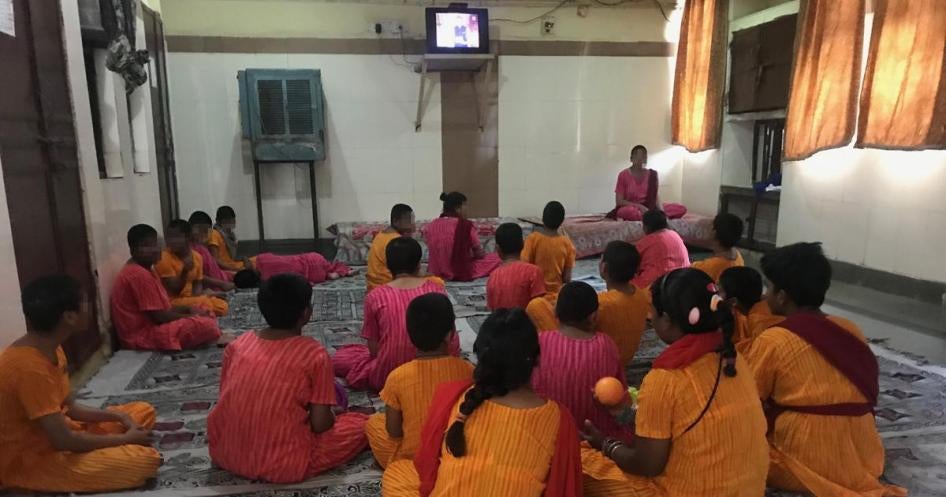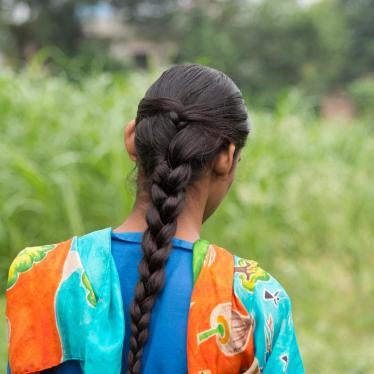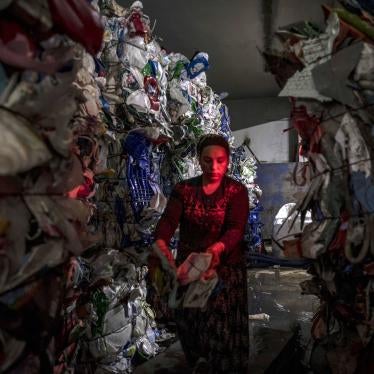Wearing yellow trousers and a green T-shirt that says “Daddy’s Future Hall of Famer”, seven-year-old Aman* came running to give the smiling, middle-aged woman present there a big hug, wrapping his tiny arms around her waist. Aman has Down Syndrome and has lived most of his young life in Asha Kiran, a government-run residential institution for people with intellectual disabilities and mental health needs in Delhi. His effusive greeting was for a senior official at the facility.
His parents abandoned him, said the official. He was one of three children and when his parents separated, they each took one healthy child and told a non-governmental organisation to make arrangements for Aman. That is how he came to be at the residential facility. Aman will most likely spend the rest of his life inside the walls of this facility, where residents are often called inmates and few ever leave.
On the day of our visit in April, Asha Kiran, run by the Delhi government, housed 1,023 men, women, and children. It is grossly understaffed and overcrowded, housing double its capacity. It admits about a 100 new people every year. There are only 50 beds, reserved mostly for people with what are deemed as severe disabilities, especially infants and children, while the rest sleep on mattresses on the floor.
According to official records, between 2011 and 2017, 123 men and 73 women died in Asha Kiran. The deaths have prompted concerns over conditions there, leading the Delhi High Court to ask the state government why 11 people died within two months in 2017.
The government has failed to fill vacancies and provide adequate support to staff members in Asha Kiran, leaving them “to swim or drown”, as one senior staff member put it. Out of 400 children at the institution, some 80 are enrolled in a nearby school. Two special education teachers come to Asha Kiran but they are hardly adequate given the number of children and their varied needs. They have little opportunity to learn and play like other children.
In For Life
Most children and adults come to institutions like Asha Kiran after their families abandon them, or they are picked up by the police if they are wandering on the streets and considered dangerous or incapable of taking care of themselves. They are admitted to these institutions through court orders with no real possibility of appeal. They are unable to leave and can be kept there for life if no family member comes to take them home.
The ongoing Supreme Court hearings on the conditions in government-run institutions for people with disabilities highlight the government’s failure to ensure the rights and dignity of this hidden population. In December 2016, the Supreme Court, in a case dealing with the pitiable conditions in Asha Kiran, observed that this could be true of other such institutions in the country, and directed state governments to take remedial measures and report back on compliance with the court’s directives. However, little action was taken and the court is now seeking compliance reports from the Union and state governments.
The United Nations Disability Rights Treaty, which India has adopted, recognises the rights of people with disabilities to live in the community. India’s Rights of Persons with Disabilities Act, 2016, provides that the government will formulate necessary plans and programmes within its economic capacity to enable them to live independently or in the community.
India’s 2014 mental health policy recognises that the abandonment and homelessness of people with intellectual or psychosocial disabilities, or mental health needs, can be due to absence of “available, effective and affordable services” for them and their families. It also acknowledges that violation of their rights is a common reality and among others, singles out women, children, and people in custodial institutions as vulnerable populations.
Law vs. Reality
The laws and policies may be in place but the reality is quite different.
As institutions like Asha Kiran demonstrate, the government has done little to develop community-based assisted living services or other forms of support to allow people with psychosocial or intellectual disabilities to live independently and in the community. The government should also ensure dignified living conditions in institutions and move toward closing them.
The residents at Asha Kiran and other institutions across India have the same rights to education, rehabilitation and employment opportunities as any other citizen, which would allow them to work, earn, and live fuller lives, but without government action they will remain isolated, neglected and invisible.
Human Rights Watch found in a 2014 report that women and girls with psychosocial or intellectual disabilities in residential institutions, including Asha Kiran, faced particularly abusive conditions including overcrowding and lack of hygiene, inadequate access to general health care, and physical, verbal, and even sexual violence.
Some progress seems to have been made at Asha Kiran since then. We observed that women were fully clothed and appeared to have proper hygiene, an important step toward returning some semblance of dignity. But their hair was still clipped short, and they continued to be infantilised, with staff calling them and treating them like children.
“Show them how you can write your name,” said one staff member to a 40-year-old woman who had been living there for decades. When we spoke with her, she was articulate, thoughtful and seemed quite sharp. Yet she had not learned much more than to write her name. Most residents are just placed in front of a television set for most of the day, their potential unexplored.
Asha Kiran made some effort to find employment opportunities for people living in the institution, placing eight young men to work at a nearby dairy. But their co-workers began to exploit them, treating them as simpletons and overburdening them with their share of the work too, a staff member told us, explaining why the institution decided to end that initiative. “The society is not accepting of these people,” she said. “Girls are doubly vulnerable.”
But as the senior official hugged Aman back, she acknowledged that things need to change. “Institutions like Asha Kiran should not exist,” she told us. “They belong in their homes.”
*Name changed to protect identity.










